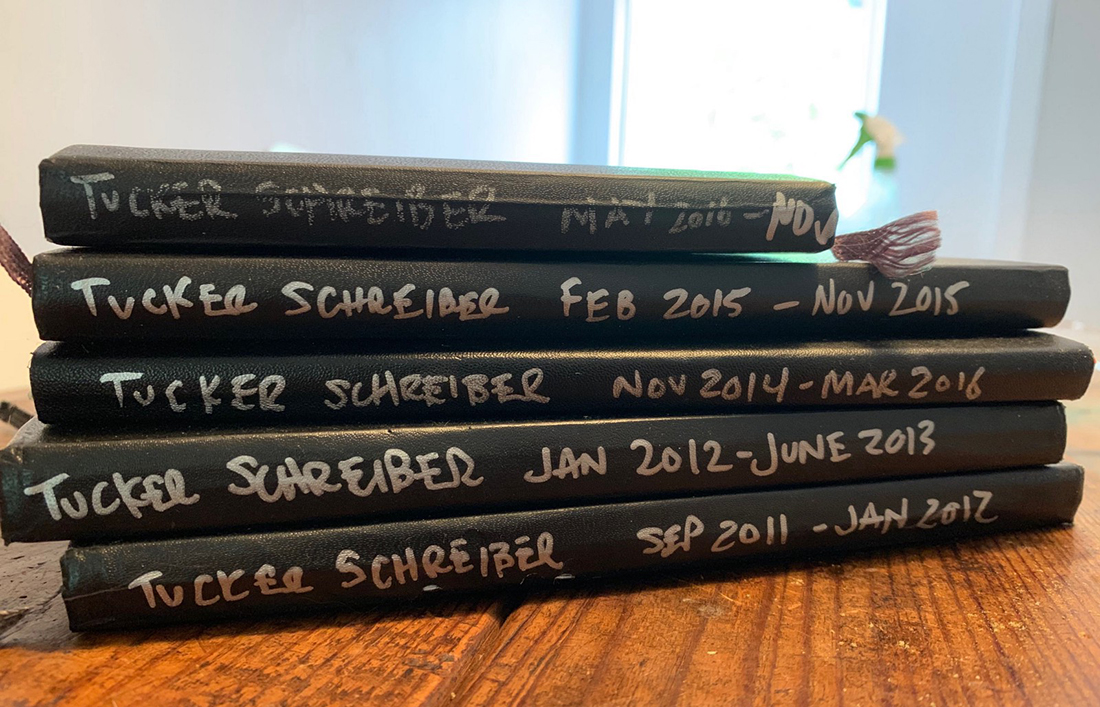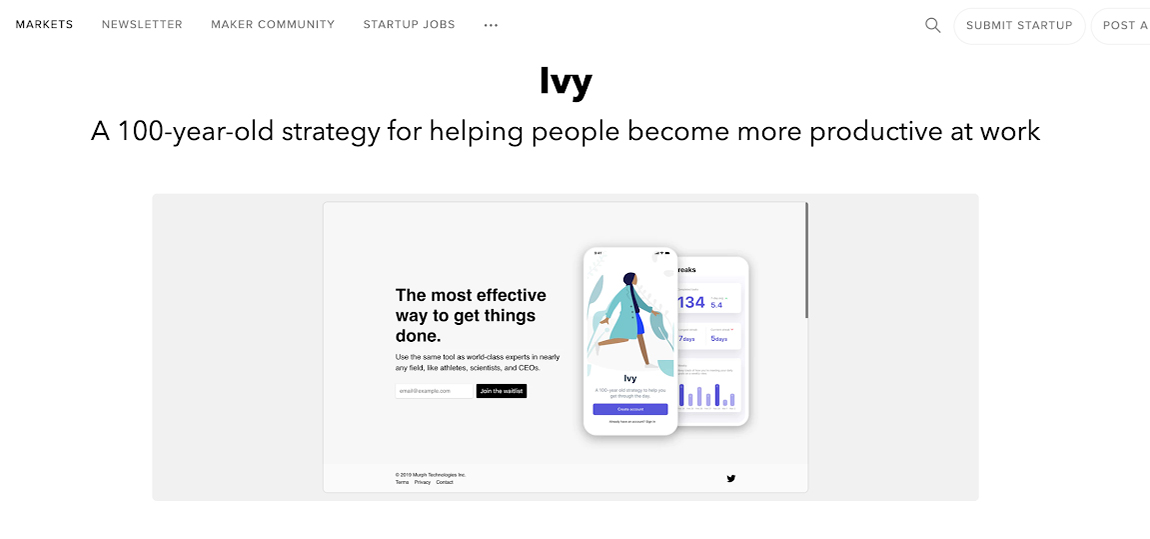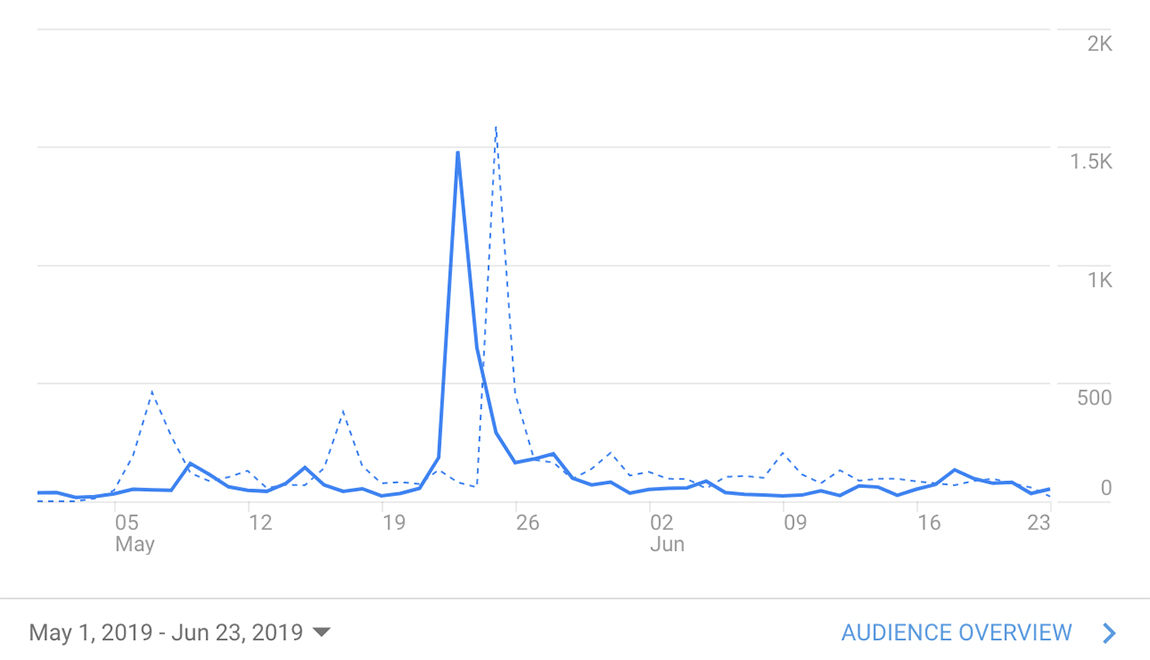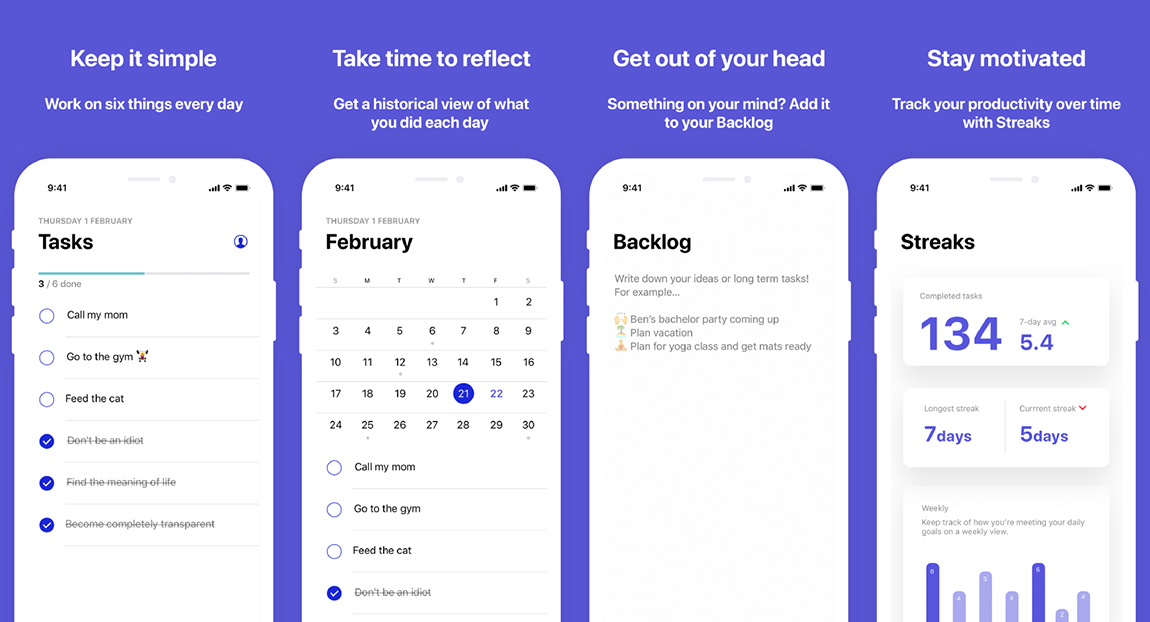“Why are you building another to-do list app? You know there’s tons of those, right?”
That’s something I've been hearing since I left my full-time job to work on Ivy. I wanted to share why Ivy is so important to me and to speak openly about what led me to it.
A bit of history 🕒
In 2013 I was struggling with anxiety and depression. I was diagnosed with generalized anxiety disorder and was frequently going to therapy and taking medication to manage it. I was in University at the time working two part-time jobs, balancing a full course load, paying rent with my credit cards, dealing with student debt and with intense emotions after my father suffered a severe aneurysm (who has since had a miraculous recovery).
It was a chaotic and difficult point in my life and it seemed to happen all at once. I am incredibly fortunate and privileged to have had the support of friends and family during that time.
Something that helped ease my mind was keeping detailed journals of what I was doing, what I needed to do, and what I wanted to do. It was the best way to get out of my head and find clarity in whatever I was dealing with. I started doing this in 2011 and did it even more frequently as life got busier.

I keep these notebooks as a reminder of what life was like back then. Every few months I’ll read through some of my old notes and scribbles. Each time I do, it reminds me how lucky I am to have “come out the other side” of those really tough points in my life.
A turning point 😊
In 2014 I dropped out of University to join Shopify; it was an exciting time. I had the opportunity to work with and learn from some of the most incredible people I have ever met. I got to work on some projects that I’m really proud of and make lifelong friendships with a number of people whom I still go to for advice and feedback.
I definitely think that Shopify was a big turning point in my life in terms of my mental health. I can’t really point to one thing in particular about Shopify that helped ease my anxiety and depression, but it definitely gave me a sense of purpose and direction that lit a fire in me that I desperately needed.
After a few years at Shopify, I joined Wealthsimple in 2017. The company’s mission is something that deeply resonated (and still does) with me. The idea of building products for people that would help set them on the path to a better financial future was something that I had a personal connection to.
Wealthsimple was an amazing place to be. I had the opportunity to work with an ambitious, talented, and caring team. Again I had the opportunity to work on some exciting projects.
After being at Wealthsimple for almost two years (all the while continuing to manage my anxiety) I felt like I was finally on a path that made sense.
But anxiety started to creep back into my life. It’s not that I was working too hard but that I was trying to get so many things done, and ultimately it felt like I was getting nothing done. That’s a bad spot to be in.
So many things to do, so little direction 😕
If you’re like me, you use a number of tools to manage your day. Calendar for meetings, Trello for work related to-dos, Jira for engineering tasks, email for almost anything, Slack for team discussion, InVision for prototyping feedback, GitHub for reviews, pen and paper for notes…you get the idea.
For someone who deals with anxiety and depression, this is not a great way to work. How do I know what emails to respond to? Should I be answering every comment in Trello? Did I forget to leave comments on a new prototype in InVision? Am I using these tools in the way they were intended to be used?
The same thing started to happen in my personal life. Did I remember to clean my cat’s litter box? Do I need to do a load of laundry? Is it recycling day? Do I need to water the plants?
I tried a number of different to-do list apps, prioritization methods, and more. But it wasn’t until I came across The Ivy Lee Method that I found something that really stuck. Its simplicity is what worked really well for me; I followed the method every day, writing down my to-dos on my whiteboard at home.
Over time I found that it helped me actually look forward to getting things done even if they were small tasks. It helped me realize that I don’t have to get everything done, just the most important things — and if you’ve dealt with anxiety or depression before, you know how this feels.
Here’s how James Clear describes the Ivy Lee Method:
At the end of each work day, write down the six most important things you need to accomplish tomorrow. Do not write down more than six tasks.
Prioritize those six items in order of their true importance.
When you arrive tomorrow, concentrate only on the first task. Work until the first task is finished before moving on to the second task.
Approach the rest of your list in the same fashion. At the end of the day, move any unfinished items to a new list of six tasks for the following day.
Repeat this process every working day.
I started doing this in November of 2018 and some of my friends did too. I think the simplicity of the Ivy Lee Method is what makes it so appealing.
Then I started thinking that there had to be a way to apply this to my work and personal life — and Ivy was born.
Getting started
When I decided to build Ivy I had one pretty significant problem to overcome: I’m not an engineer and can barely make my way around Xcode.
So I started working on a list of requirements for what the minimum viable product would be. As I worked through it, I began to realize that it was something that I could learn to build myself; but I wanted to get this built quicker in order to get it in the hands of real users and begin hearing feedback.
I started mocking up some of the different screens in Sketch and used the existing Apple UI Library to help get a head start. This way I didn't have to design the app entirely from scratch. This process — while lengthy — was a great way to force simplicity for the first iteration of the app.
Once I had the designs in a good spot I started writing out a detailed document that explained different user flows and how they app should respond based on a user’s action. This ultimately ended up being an important resource for the engineer that I worked with as it acted as a reference point for them which greatly reduced the amount of back and forth required during the actual build phase.
I then went to Upwork to post a job for Ivy. Within minutes my inbox was flooded with engineers from all around the world pitching for the job. It took me a long time to review each application; ultimately I worked through some specific criteria that helped narrow down some of the applicants. I knew that I wanted to work with someone who had experience building frontend mobile apps as well as backend software (which would house user identity and things like streaks, tasks, etc.)
I also knew that I wanted to work with someone who had more than a few thousand hours of work on Upwork as this would mean that they likely had repeat customers. Finally, I knew I wanted to work with someone who was fluent in English. A communication barrier would potentially be disastrous for building an MVP with a remote engineer.
Once I found an engineer the process was relatively straightforward. I invited the engineer to Slack, sent them my Sketch file, shared the engineering requirements doc, and set up a collaborative Trello board so that we would both know what was being worked on and when. It ended up taking about two-and-a-half months for the first version of Ivy to be built from the point of first contact to being live on the App Store.
One of the biggest takeaways from this process was accepting that whatever the engineer was building was likely going to have to be rebuilt in the future. We didn’t intend on building a product that would scale to tens of thousands of users out of the gate, but just something that would validate the idea of Ivy — and the minimum viable product we built together did just that.
First users
One thing I worried about was launching this app to an audience of, well, nobody. So while the engineer I hired was building the product, I was working on a landing page and building a marketing strategy.
I opted to build the landing page for Ivy on Landen — a simple and intuitive landing page builder. I covered the basics: an email capture form integrated with Mailchimp, conversion tracking pixels to measure the efficiency of ad spend, and a blog feature which allowed me to get started on some simple content marketing.
The first group of users that joined Ivy were from a paid listing on Betalist.com which drove a few hundred signups in the first few days. This was incredibly exciting; it meant that I had at least positioned Ivy in a way that was resonating with a group of people.

Once those users started with Ivy I began to look for other methods of distribution. I found that Facebook ads were a fairly reliable (and relatively inexpensive) source of user acquisition, so I spent a few hundred dollars on Facebook ads specifically targeting people who were fans of other productivity tools like Slack, Trello, Todoist, etc. I ran Facebook ads for about a month before turning them off (temporarily).
Then toward the end of May, I struck gold by getting featured on ProductHunt.

Although the spike in users and traffic has fallen significantly since the ProductHunt feature it does still drive a handful of people to Ivy every day, many of which have come to use the app.
Today most of Ivy's traffic comes from social media, word of mouth, and the Ivy blog.
One of the biggest takeaways from this fairly lightweight distribution strategy is that even though a big spike from something (like getting featured on ProductHunt) can be really exciting, it doesn’t necessarily mean that the people who are trying the product are going to stick around long term. Some of the people who joined Ivy from Facebook are more active with Ivy than those “early adopters” from Product Hunt.
I continue to explore new methods of distribution with Ivy and hope to continue to experiment with different marketing channels in the coming months to determine which are the most successful in driving highly engaged users with efficient marketing economics. I intend on trying Apple’s App Store Search product to see how it compares to the likes of Facebook in terms of driving adoption.
(Not) just another to-do list 🌿

The first line of code for Ivy was written in March, the first group of beta testers were invited to join in April, and it’s now available on the App Store.
Ivy is an incredibly simple to-do list app based on the Ivy Lee Method. It’s simple and restrictive in its functionality because over the years I had found that so many to-do list apps were full of unnecessary features. They left me feeling like I was using the tool incorrectly.
So what can you do with Ivy today?
-
Keep it simple. Focus on just six things every day. No more, no less. If you don’t mark one item as complete by the end of the day, it’ll get moved to your list of to-dos the following day.
-
Reflect on what you’ve done. With a calendar view you can hop back in time to see what you did on certain days.
-
Get out of your head. By using the Backlog you can take notes or write down any to-dos that you want to get done at some point in the future.
-
Stay motivated. With Streaks you can measure how many tasks you’ve completed over time, and see other fun trends about how you complete your tasks.
To date, this method and simplicity has struck a chord with the awesome folks that helped with the beta test of Ivy. I am not the only one that has been on the hunt for something that bridges the productivity and wellness gap.
What’s next? ⏩
It’s still very early for what I hope Ivy can become in the future. What makes me excited is that I believe Ivy can be a tool that will help people live more optimistic lives — to feel hopeful and confident about the future just like my journaling and to-dos did for me at the toughest points of my life.
Not just another to-do list app.
Ivy will never replace tools like Jira, Github, Trello, or others that people use to manage their work and personal lives. But I do think it can help people get a grasp of everything they need to do by acting as an aggregator that removes the cruft from all of those other tools.
I welcome you to download Ivy today and let me know what you think. If you’re like me and have struggled with anxiety or depression, you might find that Ivy works for you. But if it doesn’t I’d love to hear why and understand what changes can be made to help you in your journey.
I’m also open to speaking more about anxiety and depression, so if you ever feel the need to, please feel free to email me at [email protected].

Is the feature broken, that moves remaining tasks to the next day?
Beautiful app, Tucker! It eliminates the biggest hangups for me around the GTD system - that constant reshuffling of tasks. I will go to great lengths to eliminate an unnecessary step. :) Thank you!
And I'm guessing this is in your features roadmap, but drag and drop (or export) from backlog to today would be wonderful!
Congrats and it looks really good. Are there any plans to release this for Android?
Hello, it would be interesting to try, you know that the application is not available on the App Store? maybe in my country ... I would check. App Store Connect Settings
Hi MacPlus! Ivy is available in the US and Canadian App Store for now.
It's frustrating, I'm from Ukraine and can not try your app.